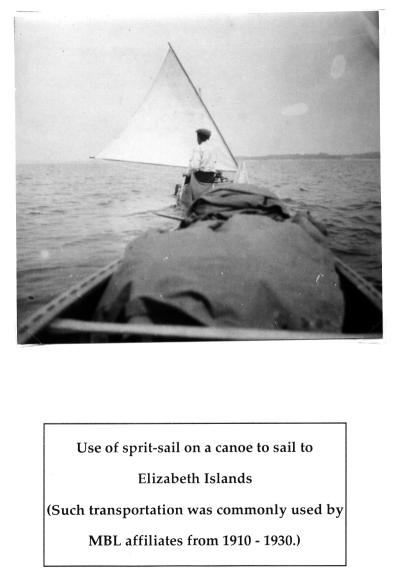Matching Items (1,496)
Filtering by
- Creators: Marine Biological Laboratory Archives

Description
HIV continues to remain a global health issue, in particular in many low and middle-income countries. The World Health Organization (WHO) estimates that of the nearly 38 million HIV-1 positive individuals, 25% are unaware they are infected. Despite decades of research, a safe and effective preventative vaccine has yet to be produced. The HIV-1 envelope glycoprotein41 and the Gag structural protein have been identified to be particularly important in HIV-1 transcytosis and cytotoxic lymphocyte response, respectively. Enveloped virus-like particles (VLPs) consisting of Gag and a deconstructed form of glycoprotein (dgp41) comprising the membrane proximal external region (MPER), transmembrane domain and cytoplasmic tail may present a unique and safe way of presenting these proteins in a state mimicking their natural formation. Another form of presenting the immunogenic glycoprotein41, particularly the MPER component, is by presenting it onto the N-terminal of an IgG molecule, thereby creating an IgG fusion molecule. In our lab, both VLPs and IgG fusion molecules are highly expressed and purified within GnGn Nicotiana benthamiana. The results indicated that these recombinant proteins can be assembled properly within plants and can elicit an immune response in mice. This provides a preliminary step in using such Gag/dpg41 VLPs and RIC as present a safe, effective, and inexpensive HIV vaccine.
ContributorsGarcia, Izamar (Author) / Mor, Tsafrir (Thesis director) / Mason, Hugh (Committee member) / Kamzina, Aigerim (Committee member) / School of Life Sciences (Contributor) / Barrett, The Honors College (Contributor)
Created2020-05

Description
Succinylcholine-induced apnea is a common problem in pre-hospital medicine that affects 1/1800 patients who undergo rapid sequence intubation. Succinylcholine is an anesthetic that mimics the neurotransmitter, acetylcholine. It binds to cholinergic receptors, blocking acetylcholine access, and causes paralysis for (normally) only a short time. Butyrylcholinesterase, which is responsible for succinylcholine hydrolysis, is deficient in a small percentage of the population. Previous studies have shown that wild-type butyrylcholinesterase (BChE) can be produced in transient-expression Nicotiana benthamiana, and can reverse the effects of succinylcholine induced apnea through enzyme replacement therapy. The wild type enzyme is also capable of irreversibly binding and inactivating organophosphorus nerve agents and pesticides, and has also exhibited cocaine hydrolase activity. Super cocaine-hydrolyzing BChE mutants, which exceed 2000 times the catalytic capability of the wild-type, have been optimized and expressed in N. benthamiana. The purpose of this study was to determine whether these mutants also hydrolyze succinylcholine with improved efficiency. Variant 3 and Variant 4 exhibited catalytic efficiencies of 2.08 x 106 M-1 min-1 and 3.48 x 106 M-1 min-1, respectively, against their preferred substrate, butyrylthiocholine, in the Ellman assay. The wild-type plant-expressed BChE did exhibit hydrolysis of succinylcholine, as we had previously determined; however, neither Variant 3 nor Variant 4 demonstrated the ability to hydrolyze succinylcholine in our particular assay. Therefore, N. benthamiana-expressed Variant 3 and Variant 4 may not succeed as a dual treatment against cocaine toxicity and prolonged succinylcholine-induces paralysis.
ContributorsScott, Boston (Author) / Mor, Tsafrir (Thesis director) / Mason, Hugh (Committee member) / Kamzina, Aigerim (Committee member) / Barrett, The Honors College (Contributor)
Created2017-05

ContributorsMarine Biological Laboratory Archives (Publisher) / Arizona Board of Regents (Publisher)
Created1935

ContributorsHuettner, Alfred F. (Alfred Francis), b. 1884 (Creator) / Marine Biological Laboratory Archives (Publisher)
Created1918

ContributorsMarine Biological Laboratory Archives (Publisher)

ContributorsHuettner, Alfred F. (Alfred Francis), b. 1884 (Creator) / Marine Biological Laboratory Archives (Publisher)
Created1928

ContributorsHuettner, Alfred F. (Alfred Francis), b. 1884 (Creator) / Marine Biological Laboratory Archives (Publisher)
Created1918

ContributorsHuettner, Alfred F. (Alfred Francis), b. 1884 (Creator) / Marine Biological Laboratory Archives (Publisher)

ContributorsHuettner, Alfred F. (Alfred Francis), b. 1884 (Creator) / Marine Biological Laboratory Archives (Publisher)

ContributorsHuettner, Alfred F. (Alfred Francis), b. 1884 (Creator) / Marine Biological Laboratory Archives (Publisher)